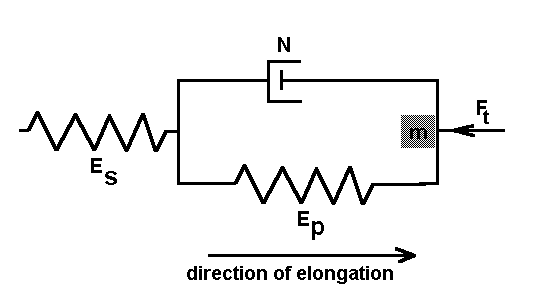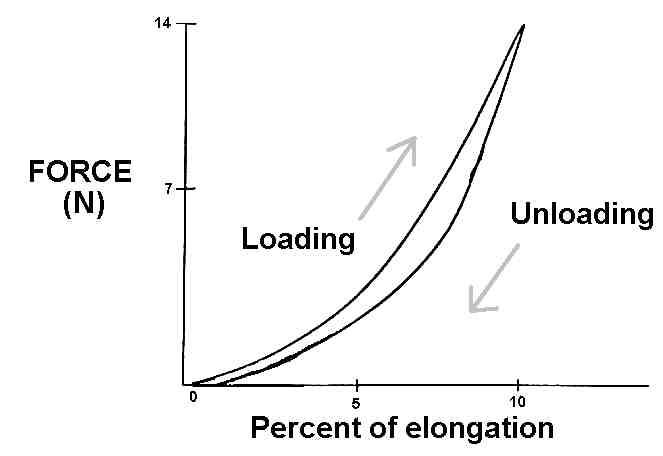

| A spring or, analogously, a muscle or ligament, develops force as it is elongated. The force it develops comes from three sources: |
|---|
A mass at rest tends to remain at rest; it resists being accelerated.
where Fi is inertial force
m is the structure's mass
a is the acceleration (d2l/dt2) at which the structure elongates
dl=L-l0
Springs store energy as they are elongated. The elastic force they store varies directly with the distance they are elongated beyond their resting length l0.
The molecular structure of many tissues causes them to display the property of viscosity, a resistance to flow, that many therapists call "damping." In these tissues, stiffness (the slope of the passive length-tension curve) increases when the rate (or velocity) of elongation increases.
Human tissues appear solid. To understand how they might possess properties, like viscosity, that relate to flow, we recall that their protein molecules move with respect to each other in an aqueous environment. At the level of the protein molecules that comprise muscle fibers, the formation of transient cross-bridges may explain another property, thixotropy, which may contribute to muscle's viscoelastic behavior.

| Ft
= Fi + Fe + Fv= ma + (E * dl) + (N * d(dl)/dt) |
|---|

| Some spring models differentiate between series and parallel elements. Magnusson, Simonsen, Aagaard, Kjaer (1996) discuss research that attributes a muscle's series elastic properties (Es) to the endomysium, and its parallel-elastic properties (Ep) to the perimysium. |
|---|

| These tissues' length-tension curves differ for loading and unloading. This graph (Rodgers & Cavanagh, 1982) illustrates this property of HYSTERESIS. |
|---|
Rodgers, M.M., & Cavanagh, P.R. (1984). Glossary of biomechanical terms, concepts, and units. Physical Therapy, 64, 1886-1902.